Learn proper care and growing requirements for the stunning philodendron silver sword plant, including ideal light, humidity, soil and watering needs to maintain vibrant variegation.
The philodendron silver sword is an eye-catching houseplant with silvery-white streaked leaves that add a pop of brightness to any indoor space. This vining philodendron variety has been steadily gaining popularity thanks to its distinctive foliage and easy care requirements. If you’re looking to add one to your houseplant collection, this guide covers everything you need to know about caring for silver sword philodendrons.
What is a Philodendron Silver Sword?

The silver sword, scientifically known as Philodendron hastatum ‘Silver Sword,’ is a cultivated variety of Philodendron hastatum. It is part of the larger Araceae or aroid family of plants, along with other popular houseplants like pothos, monsteras and anthuriums.
This philodendron originally hails from tropical regions of Central and South America. It is an epiphytic trailing vine that climbs up trees and surfaces in the rainforest understory using its aerial roots.
The “silver sword” name comes from the plant’s elongated, sword-shaped leaves with noticeable silver to white variegation streaked lengthwise against a deep green background. The contrast between the bright white sections and the glossy emerald green creates its striking, eye-catching appearance.
As a houseplant, the silver sword is a prolific grower, sending out long vining stems that trail beautifully from hanging baskets or can be trained up a moss pole or trellis. With its moderate size and care requirements, it’s become a favorite for adding bright pops of variegation to indoor gardens.
When grown in proper conditions, the silver sword philodendron makes a gorgeous, trailing accent or specimen plant that provides cheerful, leafy interest all year long.
Light Requirements
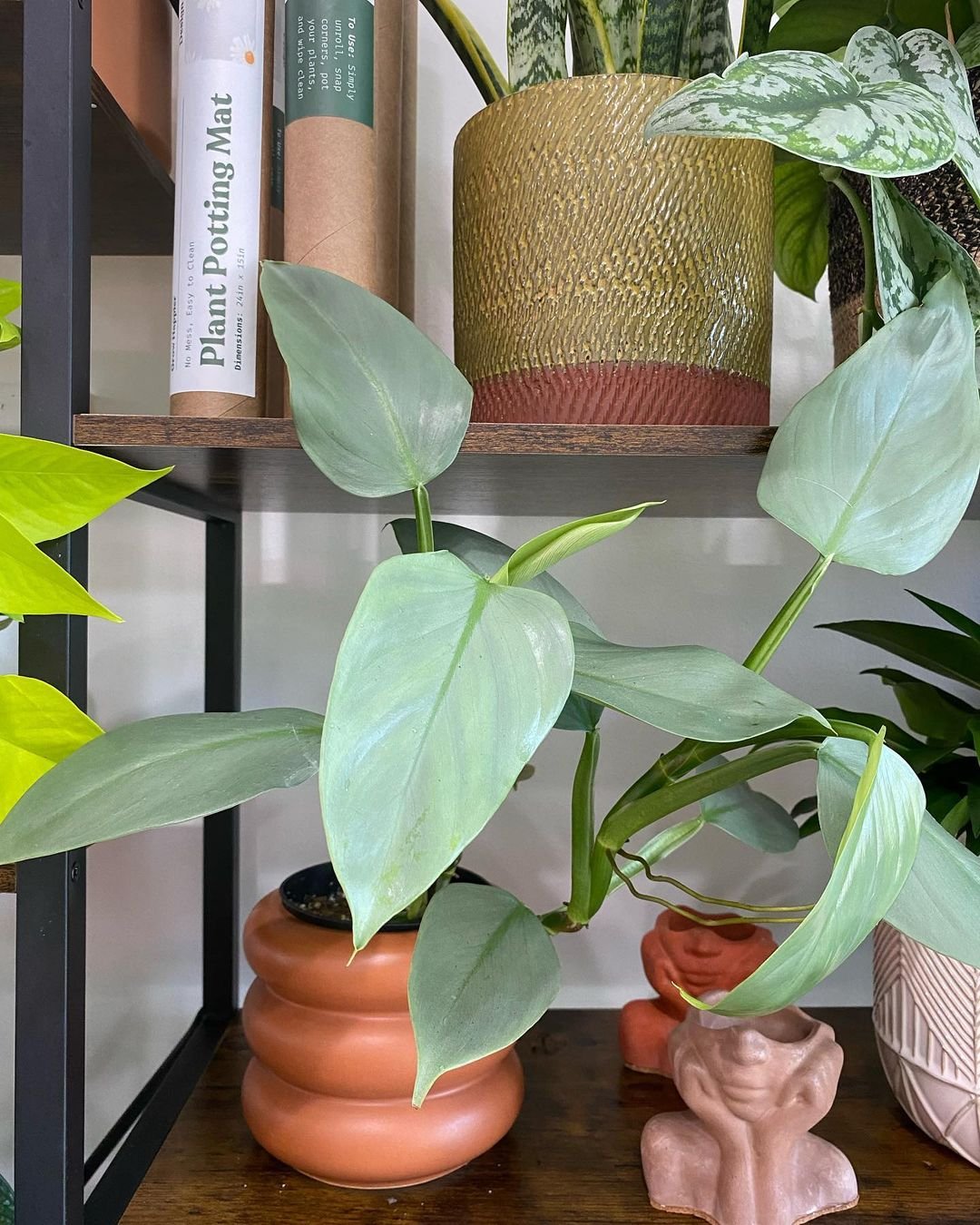
Finding the ideal lighting is one of the trickier aspects of caring for philodendron silver swords. Like many variegated plants with bright white or pale leaves, they demand very bright light to maintain their vibrant coloring.
The best spot is within 3-6 feet of an unobstructed east or west-facing window. Southern exposures with direct midday sun may be too intense and can scorch the delicate leaves.
However, very low light conditions cause the silver streaks to revert to solid green, losing that prized variegation pattern. Inadequate lighting often leads to smaller leaves and leggy growth as the plant searches for brighter conditions.
Rotate your plant periodically to ensure even exposure. You may need to experiment to find the proper balance of bright light without direct sun streaming in. Sheer curtains can help filter and diffuse harsh rays.
Artificial grow lights are also an option if you can’t provide enough natural light from windows. Position them 6-12 inches above the plant for at least 8 hours per day
Temperature and Humidity
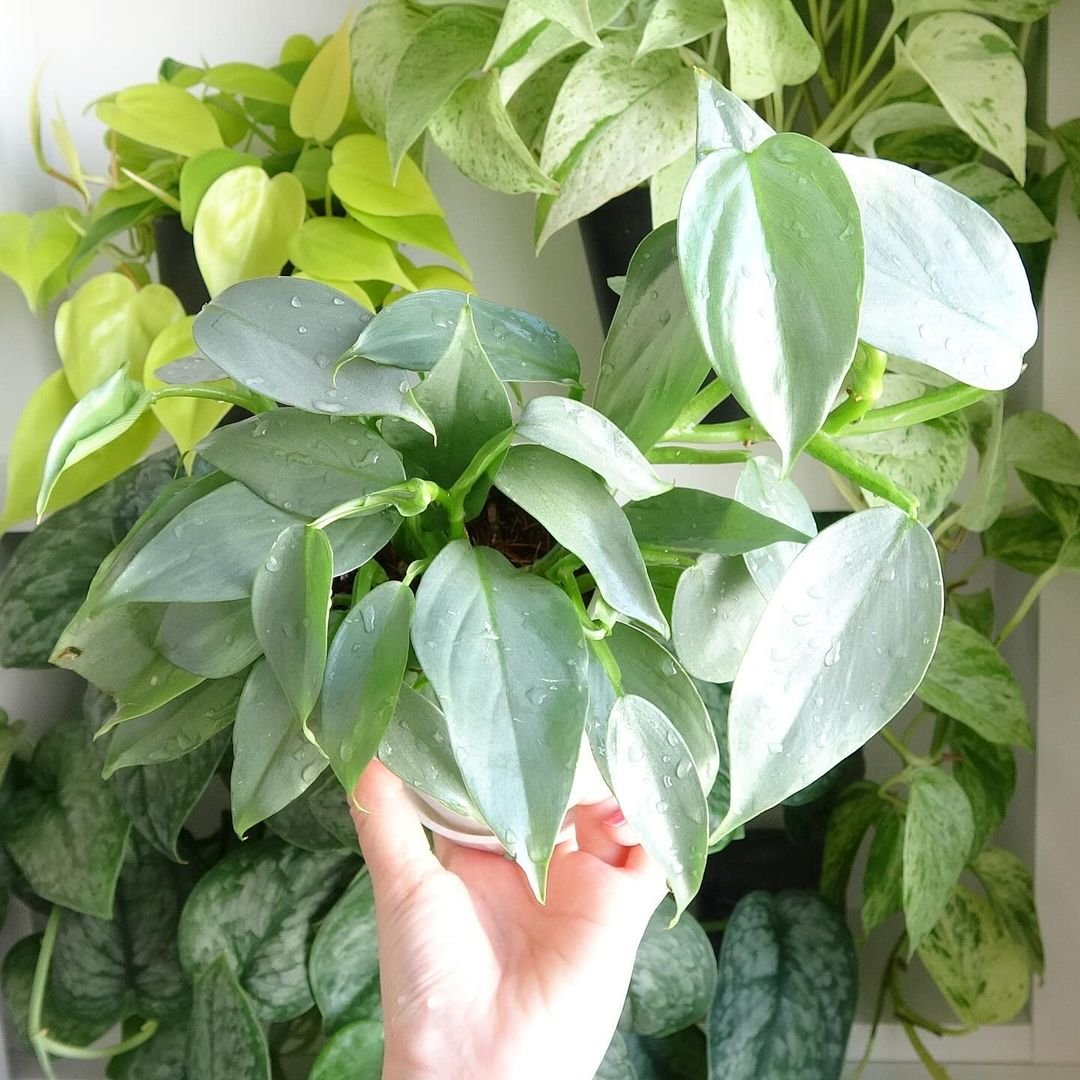
Philodendron silver swords are tropical plants that require warm temperatures and moderately high humidity levels for optimal growth and leaf coloration.
The ideal temperature range is between 65-85°F year-round. Avoid exposing them to cold drafts or allowing temperatures to drop below 60°F for extended periods.
Humidity between 40-60% is recommended, with 50% being ideal. Palm tree varieties and other philodendrons make perfect humidity buddies grouped together.
Signs of low humidity include leaf browning along the edges, crisping tips, and stunted growth. Run a portable humidifier nearby or place the plant on a pebble tray.
Gently mist the leaves occasionally as well to help boost humidity around the plant. However, be careful not to overwater or leave the foliage wet for extended periods to avoid disease issues.
Soil Requirements
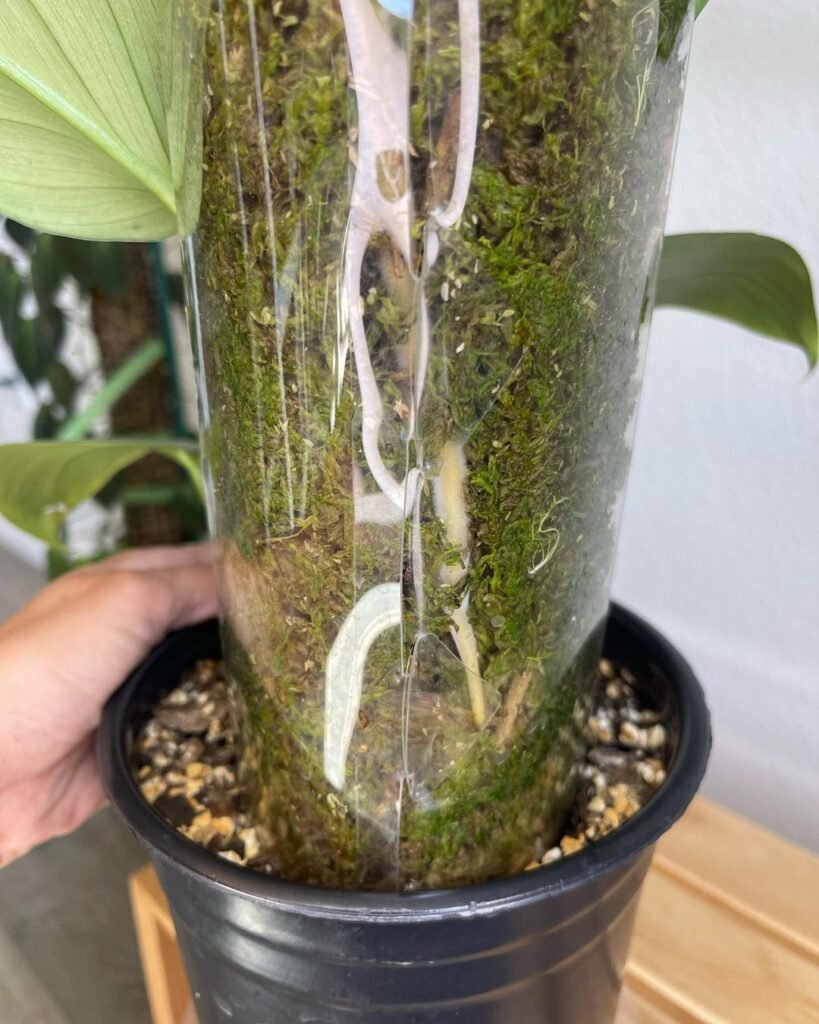
Silver sword philodendrons need a chunky, loose, well-draining soil mix to prevent issues like root rot while still retaining some moisture for their epiphytic tendencies.
Look for a quality potting mix made for philodendrons and aroids containing ingredients like peat moss, perlite, orchid bark, and horticultural charcoal for aeration.
The potting mix should be light, fluffy and never become waterlogged or compacted. Adding extra perlite or orchid bark to a standard potting mix helps increase drainage.
Terra cotta or clay pots are ideal as their breathable material helps prevent moisture buildup. Make sure any containers have large drainage holes in the bottom to allow excess water to escape.
Watering Needs
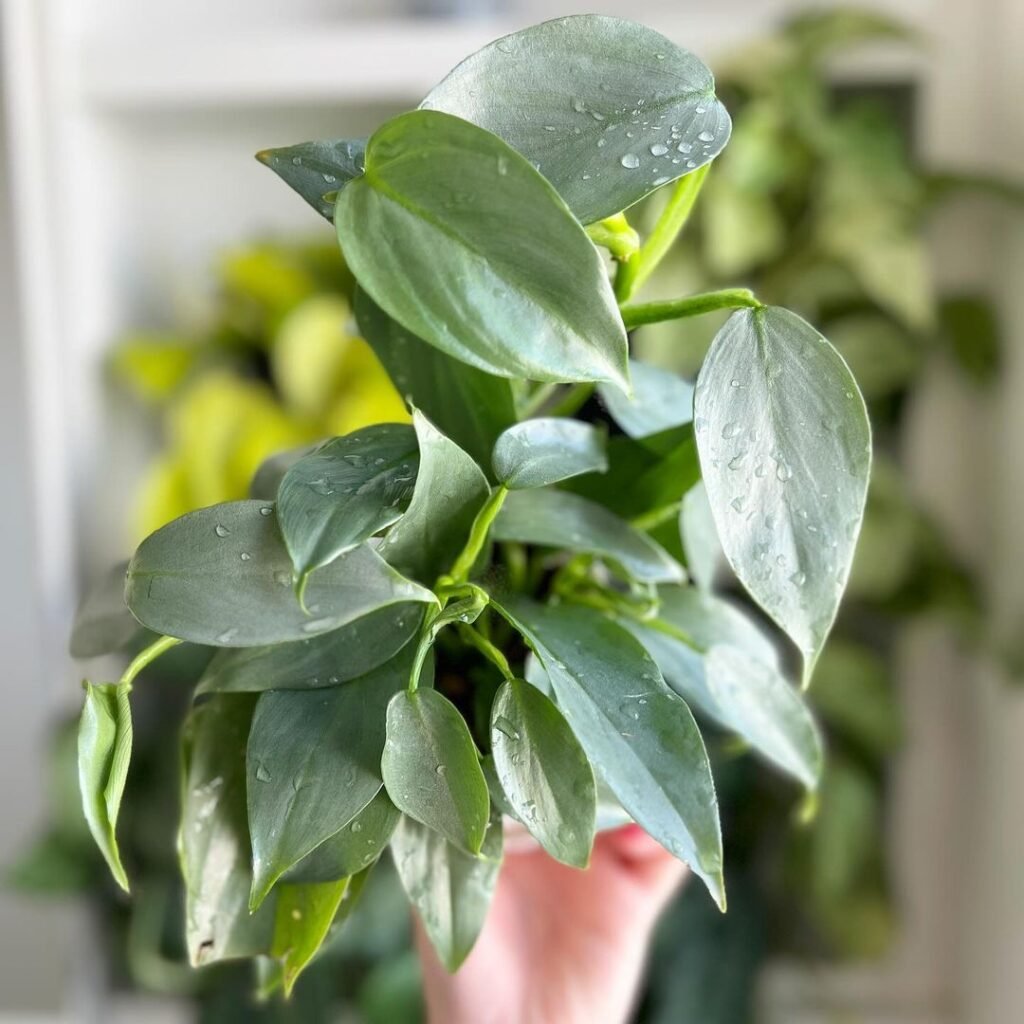
Like most philodendrons, the silver sword variety has a moderate to high watering need. However, it’s very important not to overwater or allow the soil to become saturated.
Check the soil moisture every few days by sticking your finger into the potting mix up to the second knuckle. Once the top 2-3 inches start to feel dry, it’s time to water thoroughly.
Water slowly and deeply all the way through the pot, allowing excess moisture to drain away freely from the bottom drainage holes. Discard any excess in drain trays or saucers.
Signs of overwatering include yellowing lower leaves, soft rotting leaf stems, fungus gnats, and the soil staying saturated for too long after watering. Underwater leaves often go limp and curl inwards from dehydration.
The potting mix should dry out a bit between waterings, but shouldn’t become bone dry either. Adjust your watering schedule seasonally as water needs will be lower in winter months.
Fertilizing
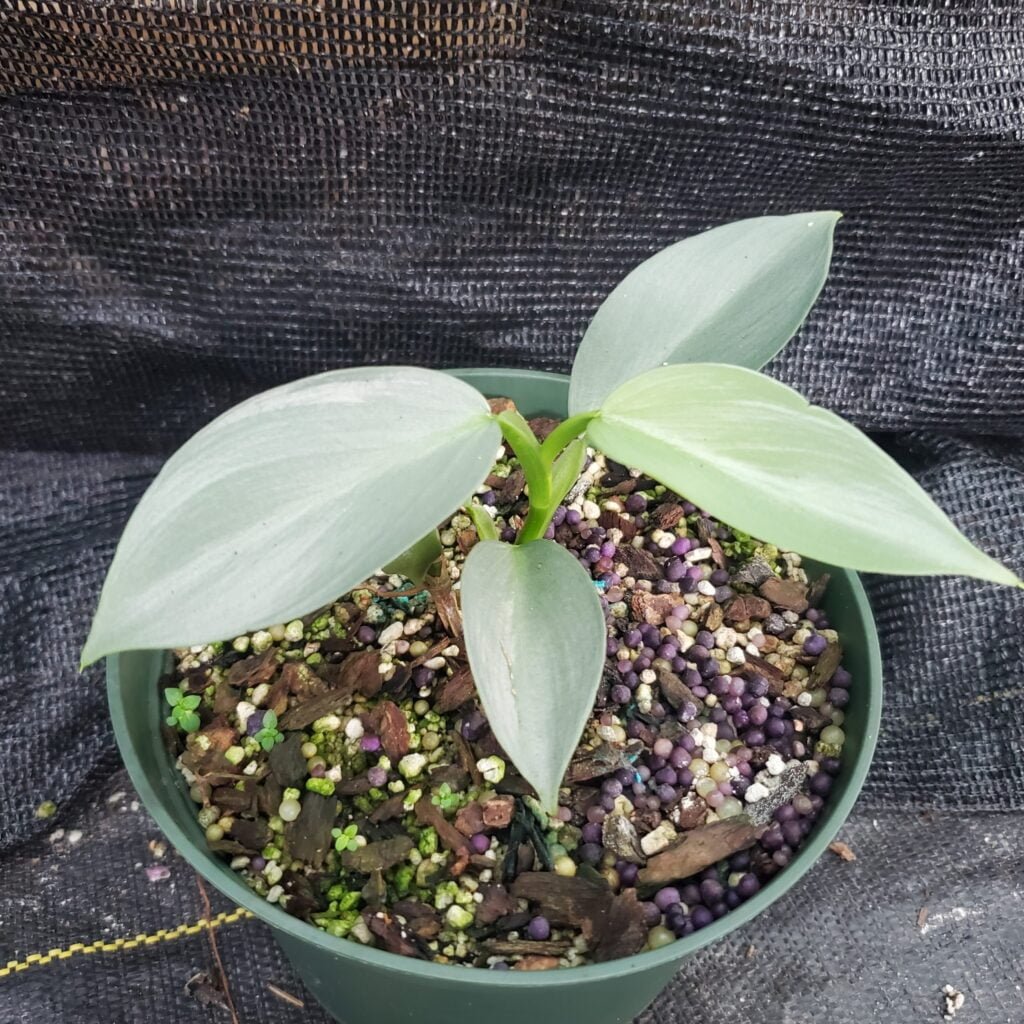
Regular fertilization helps philodendron silver swords maintain their lush, vibrant growth and leaf coloration. However, too much fertilizer can lead to nutrient toxicity and leaf burn issues.
Feed your plant every 4-6 weeks during the spring and summer growing season using a balanced liquid fertilizer diluted to half strength. Look for fertilizers formulated for aroids, blooming houseplants, or fish/seaweed based varieties.
You can also use a slow-release granular fertilizer sprinkled into the top few inches of potting mix for a sustained feeding approach. Just be sure not to overfeed, as excess fertilizer salts build up and damage roots over time.
Be sure to flush out the soil every few months by giving the plant a deep watering to leach out any built up salts.
Stop fertilizing altogether during the winter dormancy period when plant growth naturally slows down. Overfeeding leads to weak stems, poor variegation, and leggy growth in philodendrons.
Pruning and Training

One benefit of the silver sword philodendron is that it requires very minimal pruning or trimming compared to many vining houseplants. Simply keep an eye out for any dead, damaged or yellowing leaves, and prune those off when necessary.
Use sharp, sterile scissors or pruners to snip off leaves and stems cleanly, being careful not to tear or damage any stems you wish to keep.
You can also pinch or snip off new growth tips periodically to encourage fuller, bushier growth and branching from leaf nodes down the vining stems.
Silver swords can easily be trained to climb up a moss pole, trellis or other vertical support by using soft plant ties to attach the leads in a spiral pattern up the pole. Otherwise, allow them to freely trail from hanging baskets or high shelves.
Check ties periodically and adjust as the plant grows to prevent any damage to stems. With proper training and trimming, you can sculpt your silver sword into an attractive upright or trailing plant based on your needs.
Design Ideas
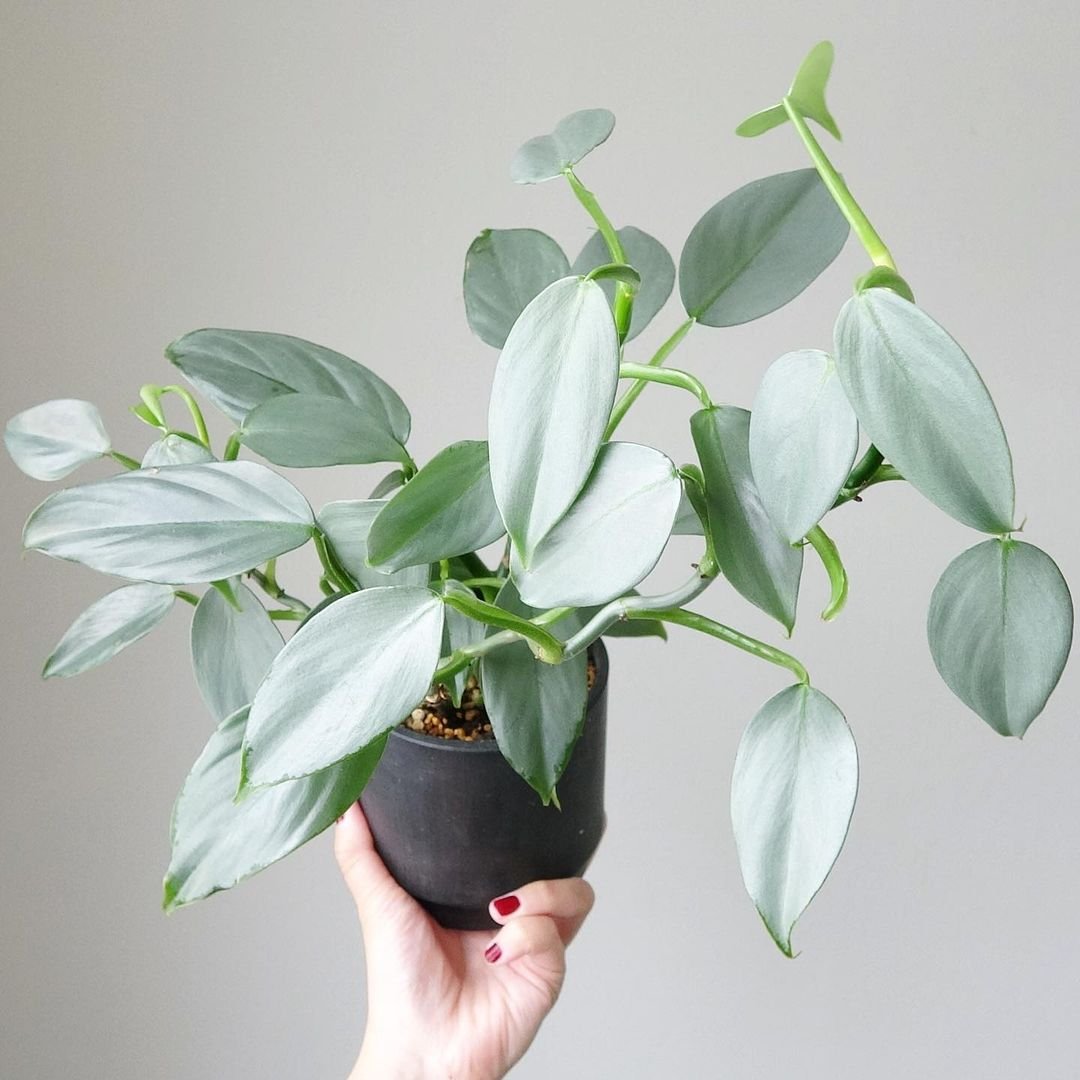
With their stunning variegation and easy care requirements, the philodendron silver sword works beautifully in a range of indoor planters and display ideas. Here are some popular options:
Hanging Baskets
To really show off the trailing vines, the silver sword philodendron looks striking when grown in hanging baskets and allowed to cascade freely from elevated shelves or ceiling hooks.
Use a high-quality potting mix with plenty of drainage in baskets lined with moss or coco coir. Position your hanging basket where the stems will receive bright, filtered light all day long.
Mixed Containers
Philodendrons also combine beautifully with other tropical houseplants in mixed indoor planter arrangements. The vibrant silver and green foliage provides gorgeous contrast against solid greens and other leaf textures/colors.
Try pairing your silver sword with an upright dracaena, bunching fiber plant like dracaena massangeana, and a trailing plant like pothos or tradescantia for a lush, multilayered look.
Just be sure to match the light, water and humidity needs of your mixed planting companions to keep them all thriving together.
Shelves and Plant Stands
For a simpler display option, silver swords look stunning showcased in individual containers on shelves or plant stands. The trailing vines allowed to spill over the edge are guaranteed to grab attention and add a bright focal point to any room.
Use a decorative pot with drainage, and provide a saucer to catch any excess water. Elevate the plant to eye level so you can fully appreciate the beautiful variegation.
Living Curtains
If you have a very bright room with indirect sun exposure, you can even construct an eye-catching “living curtain” using philodendron silver swords. Train the vining stems to grow vertically using a trellis, hanging rods, or wall-mounted planter boxes.
As the stems trail down, the silver swords create a lush, vibrant plant curtain with visual interest and the ability to filter light. It’s an innovative and attractive way to incorporate these plants into interior spaces.
Terrariums and Vivariums
The compact size and vining growth habit of silver sword philodendrons also makes them candidates for terrarium or vivarium growing under the right conditions. Group yours with other humidity-loving plants like begonias, ferns or peperomia in an enclosed glass environment.
Be sure to use a chunky, well-draining potting mix for aroids in your terrarium to prevent moisture buildup and root rot. Proper lighting, airflow and monitoring is crucial for enclosed environments.
No matter which way you choose to display your philodendron silver sword, taking the time to meet its specific care requirements will reward you with an absolutely gorgeous, eye-catching houseplant. The mesmerizing silver streaks and lush green foliage are sure to be the star attraction wherever you decide to feature this tropical beauty indoors.
Pingback: https://gardenersschool.com/philodendron-silver...
Pingback: Philodendron Silver Sword Care Guide | Gardenin...
Pingback: Philodendron Silver Sword Care Guide | Gardenin...